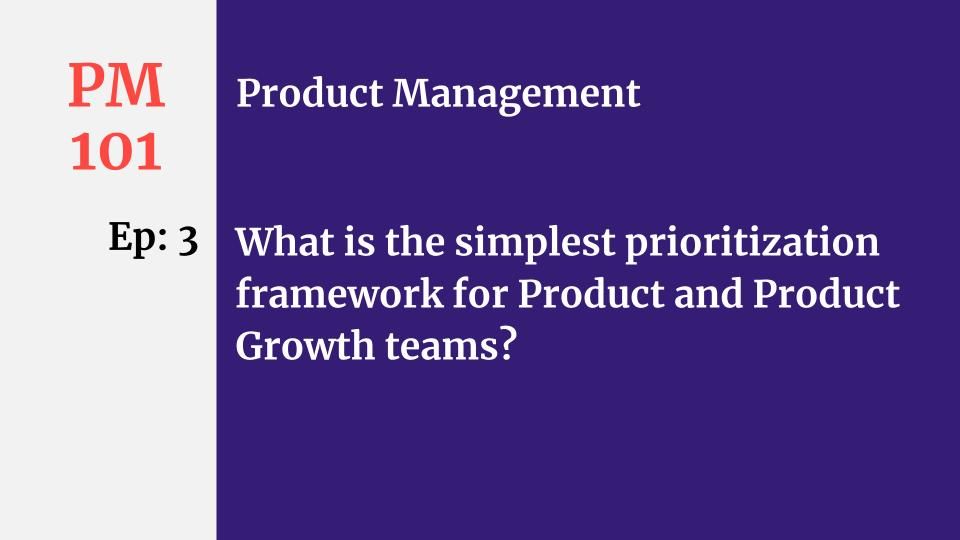PM: Ep #3: What is the simplest prioritization framework for Product and Product Growth Teams?

Let's talk about the simplest prioritization framework for product managers and product-led growth teams.
Effective prioritization is the key to building highly agile and effective teams. As a product manager, how do you decide what to build tomorrow? Should also take into account what you could make instead? Opportunity cost is a real factor in Product Management decision-making.
Implementing one initiative means saying no to another. The most effective teams – ones that make high-quality changes in short periods of time – stay focused on key tasks. That's why prioritization is a crucial skill for agile Product Growth teams and product managers.
Before we go into the prioritization framework, let me share a larger context.
I believe that every product team should have a vision, and that vision should dictate 1-3 directions, or areas of focus, that your team can work towards in order to fulfill that vision. This way, every initiative can be aligned with both the broader vision and a specific direction.
For example — at Barracuda, we decided on our product growth vision of making it easy for everyone to try, buy, and adopt our products. From this vision, we outlined the following directions that we want to focus on:
- Make it easy to sign up for our product
- Shorten the time it takes to experience product value
- Clearly define the next steps a prospect should take to progress within the product.
Once we defined these directions, every initiative we discussed afterward fell into one of these three categories.
Now, let’s talk about the simplest but effective prioritization framework for product management. It consists of three scores:
- Customer value/impact
- How much benefit (or value) will customers receive from this new feature?
2. Business impact
- What is the ROI for the organization?
- What will the organization gain in revenue, KPIs, or market share from this feature?
3. Engineering effort
- How much effort does it require to implement this feature?
The scores can be on a scale of 1-5. Consistency is key – you want to use the same scale for all three scores.
The customer value score and business impact score should start from one, with five being the highest impact. For engineering effort, it’s better to score in reverse, giving the highest score to the feature with the least effort. For instance, a feature that could be built in a week would get a score of 5, and a feature that would take six months would get a score of 1 or 2.
The higher the score, the better. When you add up all three scores for each proposed feature, those features with the highest scores should be prioritized first.
Again, consistency is key in scoring feature priority. You’ll need to ensure that a score of 5 for one feature equals the same score for another. To do that, I recommend writing a definition for each number on the scale. This way, you’ll have a doc to share among your team, so everyone is on the same page about what it means to give a score of 3 on customer value, or 4 on business impact.
Below, I provide a few more detailed resources on prioritization frameworks for you to study.
GSD and see you next time.
Checkout my course on How to Conduct Customer Interviews
